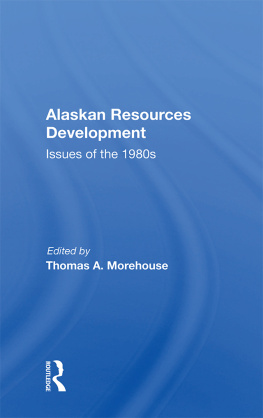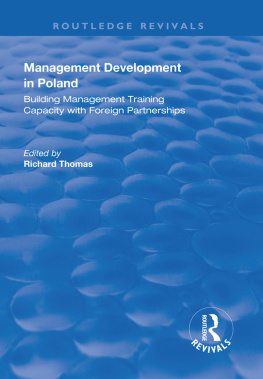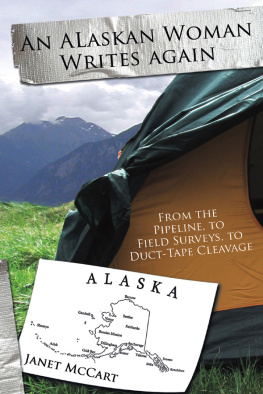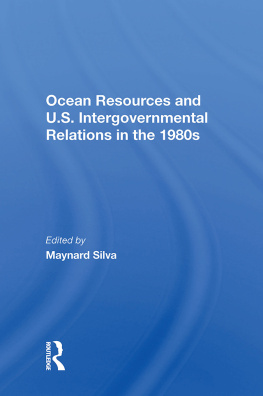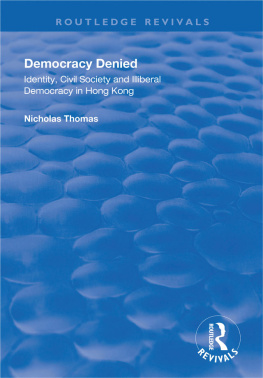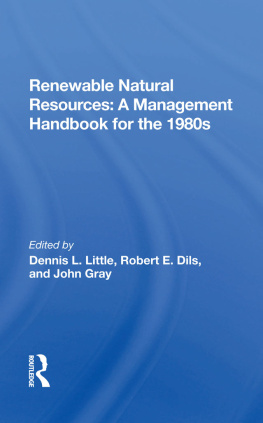Alaskan Resources Development
Also of Interest
Conflict and Choice in Resource Management: The Case of Alaska, John S. Dryzek
Earthcare: Global Protection of Natural Areas: The Proceedings of the Fourteenth Biennial Wilderness Conference , edited by Edmund A. Schofield
Natural Resources for a Democratic Society: Public Participation in Decision-Making, edited by Albert Utton, W. R. Derrick Sewell, and Timothy O'Riordan
World Petroleum Resources and Reserves. Joseph P. Riva, Jr.
Managing Air Quality and Scenic Resources at National Parks and Wilderness Areas, edited by Robert D. Rowe and Lauraine G. Chestnut
Decentralizing Energy Decisions: The Rebirth of Community Power, Ellis Cose
Energy, Economics, and the Environment: Conflicting Views of an Essential Interrelationship, edited by Herman E. Daly and Alvaro F. Umaa
The Individual m, the Public Interest: Political Ideology and National Forest Policy, Richard M. Alston
Renewable Natural ResourcesA Management Handbook for the Eighties, edited by Dennis L. Little, Robert E. Dils, and John Gray
Strategic and Critical Minerals, James E. Mielke and L. Harold Bullis
International Minerals: A National Perspective, edited by Allen F. Agnew
Food from the Sea: The Economics and Politics of Ocean Fisheries, Frederick W. Bell
The Politics of Pacific Island Fisheries, George Kent
Resource Management and the Oceans: The Political Economy of Deep Seabed Mining, Kurt Michael Shusterich
Available in hardcover and paperback.
About the Book and Editor
Alaskan Resources Development: Issues of the 1980s
edited by Thomas A. Morehouse
Many U.S. citizens and policymakers look to Alaska as a resource storehouse for the remaining years of this century and beyond. Yet, how much of the national need for energy, strategic minerals, fisheries products, and other renewable and nonrenewable resources can Alaska be expected to fill? Can Alaskans meet national demands while diversifying their economy and maintaining their region's unique environmental and ecological values? What choices are Alaska's policymakers being confronted with, and what national and international considerations will shape the outcome? In this book, experts explore these and related questions, examining the federal and state policies, economic and political constraints, and likely environmental and social consequences of Alaskan resources development during the next two decades.
Dr. Morehouse is professor of political science at the Institute of Social and Economic Research, University of Alaska, Anchorage. He is coauthor of Issues in Alaska Development and The Dynamics of Alaska Native Self-Government and is a member of the Alaska Council on Science and Technology.
Alaskan Resources Development
Issues of the 1980s
edited by Thomas A. Morehouse
First published 1984 by Westview Press, Inc.
Published 2018 by Routledge
52 Vanderbilt Avenue, New York, NY 10017
2 Park Square, Milton Park, Abingdon, Oxon OX14 4RN
Routledge is an imprint of the Taylor & Francis Group, an informa business
Copyright 1984 Taylor & Francis
All rights reserved. No part of this book may be reprinted or reproduced or utilised in any form or by any electronic, mechanical, or other means, now known or hereafter invented, including photocopying and recording, or in any information storage or retrieval system, without permission in writing from the publishers.
Notice:
Product or corporate names may be trademarks or registered trademarks, and are used only for identification and explanation without intent to infringe.
Library of Congress Catalog Card Number: 83-51157
ISBN 13: 978-0-367-01963-1 (hbk)
For George Rogers
Contents
Thomas A. Morehouse
Richard A. Cooley
Arlon R. Tussing
Bradford H. Tuck
Matthew D. Berman
Robert B. Weeden
Thomas A. Morehouse
Thomas A. Morehouse
This volume is the product of a collaborative effort, though each author is responsible for his own contribution. We developed common themes, commented on each other's drafts, and subscribe to the final result. This is not to say that we take common positions on all the aspects of Alaska's resources development dealt with in this book. The subject is much too dynamic, complex, and value-laden to permit such agreement. But our viewpoints and judgments turned out to be much more consistent and complementary than we had initially assumed they would be. We believe that the various chapters fit together to form a coherent picture of the realities of and prospects for Alaska's resources development.
This work is part, of a program of studies of Alaska's land and resources, being conducted by the University of Alaska's Institute of Social and Economic Research, under a grant from the Andrew W. Mellon Foundation. We are particularly grateful to John E. Sawyer, president of the foundation, for his help and encouragement. Lee Gorsuch, as institute director, provided essential administrative and technical support, and, as our colleague, he contributed ideas and critical perspectives to the project.
Linda Leask copy-edited the manuscript and improved the presentation in every chapter.
George Rogers contributed ideas and suggestions for several chapters of this book, and all of us drew directly or indirectly on his previously published work. Scott Goldsmith also reviewed several chapters and provided valuable insights and information. We also want to thank the following for their comments on individual chapters: Russell Babcock, Connie Barlow, Gil Eakins, Gregg Erickson, Gordon Harrison, David Heatwole, Lee Huskey, Theodore Lane, Dona Lehr, John Sims, and John Whitney.
Kandy Crowe efficiently and skillfully typed the manuscript
T.A.M.
Matthew D. Berman is assistant professor of economics with the University of Alaska's Institute of Social and Economic Research.
Richard A. Cooley is professor of geography and environmental studies at the University of California, Santa Cruz.
Thomas A. Morehouse is professor of political science at the University of Alaska's Institute of Social and Economic Research.
Bradford H. Tuck is professor of economics and dean of the School of Business and Public Affairs at the University of Alaska, Anchorage.
Arlon R. Tussing is a consultant in economics and adjunct professor with the University of Alaska's Institute of Social and Economic Research.
Robert B. Weeden is professor of resource management at the University of Alaska, Fairbanks.
1
Introduction
Thomas A. Morehouse
Alaska's natural resources attracted first the interest of the Russians, then of the British, and finally of the Americans. The early eighteenth century Russian discoverers were motivated by curiosity about whether the Asian and North American land masses were joined. But Russian settlement and exploitation were spurred by the sea otter pelts that survivors of Vitus Bering's expedition brought back with them to the Russian court. Thus, "the eastward course of Russia's empire and the fur trade converted the passage from Kamchatka to Alaska into a busy sea lane.... " The British Hudson's Bay Company followed in the nineteenth century, also in pursuit of furs and empire. By the 1860s, the combination of now-depleted marine resources and competitive imperialism persuaded Russian officials that it was time to sell this vast but costly and barely settled colony.


